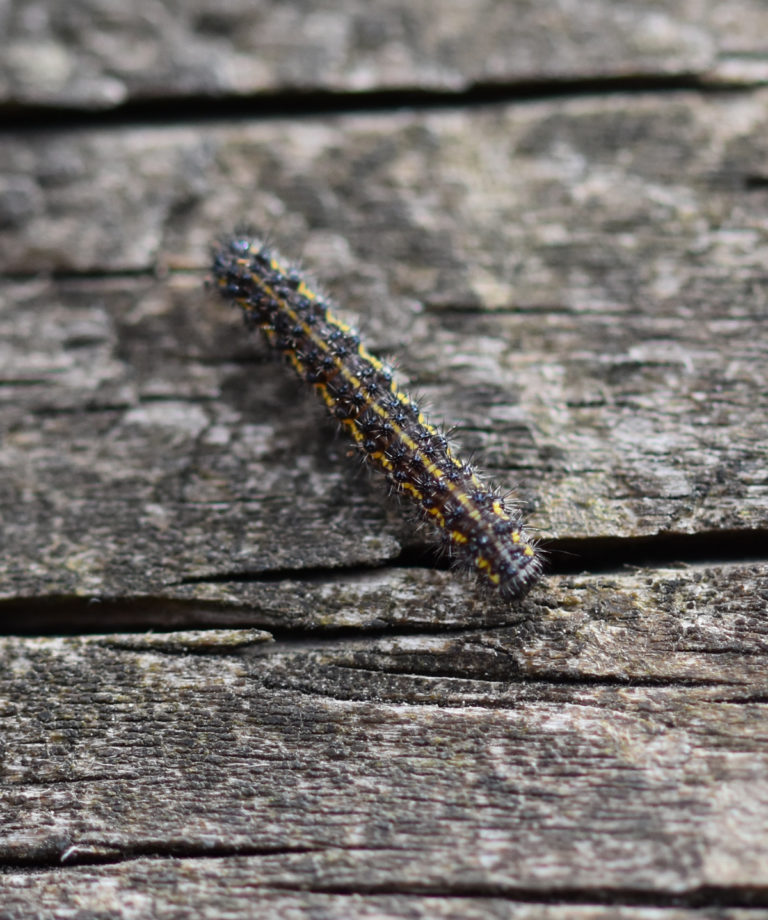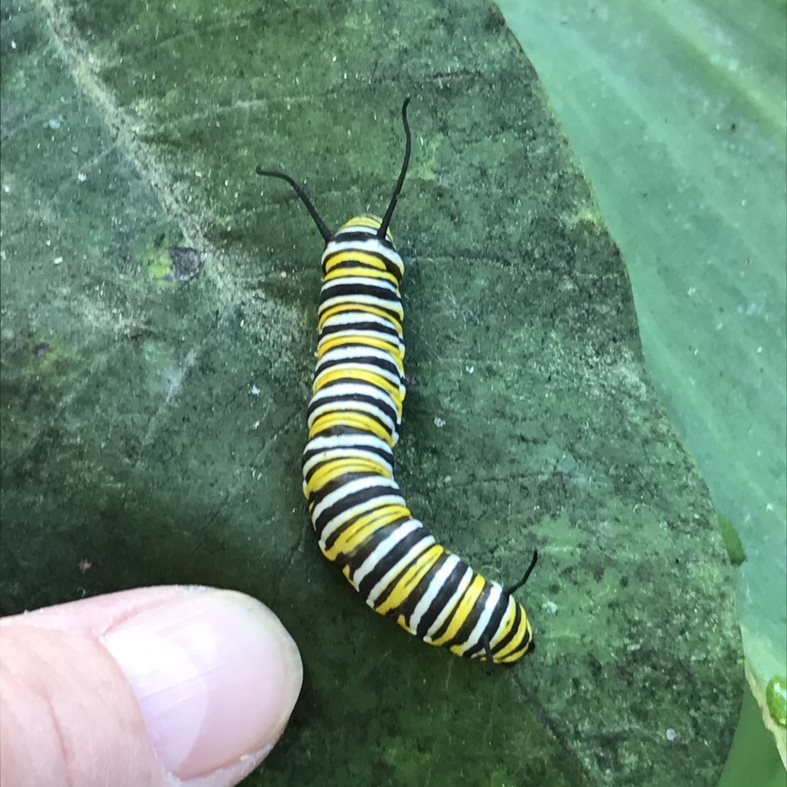

Black and Yellow Caterpillar Identification However, it’s best to avoid touching any color of caterpillar that has spines or tufts of fine hairs. But you generally don’t have to worry about black and yellow caterpillars being poisonous. The horns at their head or tail end, eye-like markings, fuzzy bodies, and bright yellow colors, or black and yellow stripes are to ward off potential predators. Some types of black and yellow spiky caterpillars could look menacing. Also, the monarch caterpillar ( Danaus plexippus) and Cinnabar moth caterpillar ( Tyria jacobaeae) contain toxins that could poison small birds or rodents.
#BLACK CATERPILLAR WITH YELLOW STRIPES ON SIDE SKIN#
However, the yellow and black hairy spotted tussock caterpillar ( Lophocampa maculata) has barbed spines that can cause skin irritation. Most black and yellow caterpillars are harmless and won’t sting you if you touch them. Are Black and Yellow Caterpillars Poisonous? In addition, descriptions and pictures of yellow and black caterpillars help you know what moth or butterfly species they become after metamorphosis. This article is a guide to identifying various types of black and yellow caterpillars. Or the black and yellow fuzzy spotted tussock caterpillar turns into the pretty brown mottled tiger moth. For example, the black and yellow striped monarch caterpillar turns into the spectacular orange and black monarch butterfly. One thing in common with all black and yellow caterpillars is that they turn into spectacular winged insects.īlack and yellow caterpillars typically don’t resemble the butterflies or moths they turn into. Or some other caterpillars can be yellow with fuzzy bodies and black spines or horns. Depending on the moth or butterfly species, the caterpillar could be black with yellow stripes or markings. Black and yellow caterpillars can be large or small crawling insects, and some may have furry bodies. Part of the Insect Identification network of sites that includes, ,, and Pinterest Facebook Twitter Linkedinīlack and yellow caterpillars are the larvae of butterflies or moths. was used in the generation of this content site is 100% curated by humans. Images can be submitted to caterpillaridentificationorg at. By submitting images to us () you acknowledge that you have read and understood our Disclaimer as it pertains to "User-Submitted Content". The material presented across this site is for entertainment value and should not be construced as usable for scientific research or medical advice (insect bites, etc.) Please consult licensed, degreed professionals for such information. The logo, its written content, and photography are unique to this website (unless where indicated) and is protected by all applicable domestic and international intellectual property laws. After gorging on foliage, the mature caterpillar moves to the ground and digs down a few inches to pupate overwinter. Apple, crabapple, basswood, elm, oak, birch, walnut, witchhazel, and willow all serve as host plants, and the feeding habits do not cause significant damage to mature trees, but this species is a pest in orchards. A variety of trees provide leafy food for this species. Emerging larvae are voracious eaters and chew through leaves quickly while grouped, eventually leaving only the petiole, or stalk. Each egg has a black pinpoint in the center of it. In July, females lay white spherical eggs on the underside of leaves. Despite this defensive posturing, the caterpillar is harmless to people. When disturbed, the caterpillar bends its head and rear end upward, creating a 'U' shape with its body. Fine, white long and short hairs cover the entire caterpillar, but they do not sting.

Eventually, the body becomes black, the stripes become white, and its upper legs are bright orange.

The body becomes reddish-brown and yellow stripes develop down the length of it. Young caterpillars are yellow-green with red patches. While the head is black, the body changes color as it matures.

As its name suggests, this caterpillar has a wide collar around its neck that is yellow, but it may also appear a bit brown or orange.


 0 kommentar(er)
0 kommentar(er)
